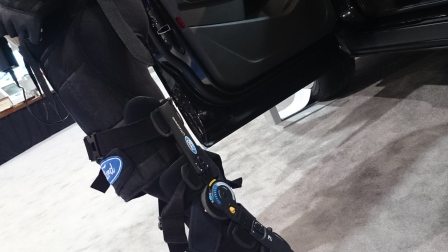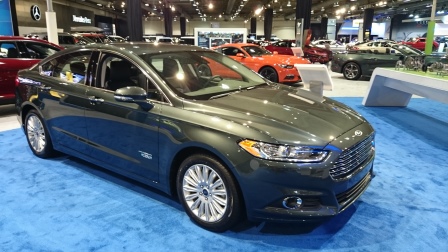Insider’s View of Ford’s Vehicle Ergonomics & Design Process
Collectively, there only a few moments in life that create lasting memories.
Like the first kiss, the first house, the first job. On that list is definitely the first car.
But after the initial euphoria of driving your car has passed, the realities of everyday driving and comfort-ability (or lack of it) set in. This is when you decide if your choice of vehicle selection was the right one or the wrong one!
The goal of every automaker (and auto dealership) is not just to sell you a vehicle, but also to ensure you remain happy in it for a long time. But a visual appeal from the exterior may tell only a part of the story. After all, there is a lot more going on inside the vehicle.
It is an area of expertise of specialized engineers and designers. Even though the “wow” factor is experienced in the interior through the presence of electronic gizmos, plush finish, leather seats etc., the real design lies in the small details that tends to get overlooked often. Having the right “fit” is just as important as having the right “look”.
Cause you just never know who the driver and passengers are going to be!
This is where vehicle ergonomics come in to play. I was invited to the Ford media event at the 2015 Calgary Auto Show, where I got to experience up close how Ford engineers and designers go through the process of ergonomics design in their vehicles.

Katie (shown) is an ergonomics engineer at Ford and is an expert in vehicle comfort and usability design.
The suit worn by the engineer (shown above) is intended to show how Ford engineers its vehicles to be accessible by 95% of drivers, specifically the aging population. The Human Factors and Ergonomics group at Ford Motor Company uses a principle called ‘Inclusive Design’ which is designing for customers who may experience difficulty with a task (for example, fastening their seat belt) which in turn will make it easier for everyone.
Things considered when designing a Ford vehicle include:
Getting ready to drive:
o The size and function of exterior handles.
o Larger door openings and smaller sill plates to make it easier to get in and out of the vehicle.
o Placement and rigidity of seat belt fasteners, so they can be quickly located and easily inserted.
While driving:
o Making sure all controls and features are within easy reach to the driver, and that their operation make sense
o Grouping of buttons and features.
o Button sizes and how they are labeled.
o Size and physical characteristics of knobs, making them easier to grasp.
o Fonts and colors used in the visual displays, such as the touchscreen and cluster, making sure that the driver can read them from where they are sitting.
o The size of buttons in the touchscreen, how they are spaced out and how they are displayed to the occupants.
o Glare and reflection reduction through choice of materials used inside the vehicle.
About the Third Age Suit

Ford uses wearable technology, such as the Third Age Suit, as a tool to help train our new engineers. The suit shown in these photos was custom-made for Ford and gives the engineers an idea of what it’s like to be 20-40 years older, or to have limited mobility in one or more of their joints. This exercise leaves a lasting impression in their minds and hopefully stays with them when they are designing features and attributes of new Ford and Lincoln vehicles.
The suit will make the wearer take slower and more deliberate actions of vehicle usage such as opening the door of the vehicle, getting in, fastening the seat belt and reaching for radio controls. The individual parts comprising the Third Age suit (shown below) are as follows:
· Foot weight : approximately 5 lbs and will throw off-balance and make it difficult to lead with that foot as they get into the car.
· Knee braces: limits normal movement in both legs
· Torso belt: stabilizes the waist, making it difficult to bend
· “suspenders”: will limit motion through the hips and waist, making it difficult to twist at the waist.
· Torso vest: adds approximately 15 lbs to the core (as set up for Calgary demo)
· Elbow braces: restricts normal movement in both arms
· Neck brace: will make it more difficult to do shoulder checks
· Cotton gloves: making fine motor tasks like turning a knob more difficult
· Glasses: simulating Glaucoma
· Tremor over the right hand: simulating Parkinson’s disease (check out demo below)
Check out the demo of getting inside a vehicle while wearing the suit (and obviously do not attempt to recreate this mobility demonstration while driving yourself!)
Now that’s something even a traveling bunny will approve!
Disclaimer: Some of the content in this post was originally written by Ford engineer Katie and provided for the purpose of this post by NATIONAL Public Relations. A sincere thank you to Allison Lennox of NATIONAL for extending the media invite. No compensation was received and all comments herein are the author’s own. All media content presented is copyright of Larkycanuck Productions.
Related Posts
Category: Arts & Design






















